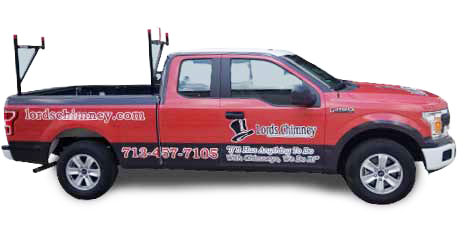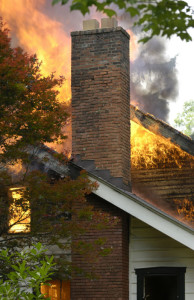Having a chimney fire is a scary experience. No matter how large or small it was, many homeowners are left wondering about the state of their fireplace: when can I use my fireplace again? Does my entire chimney need to be torn down? Is it safe for my family to remain in our house?
The first thing you should do after a chimney fire is call a certified chimney sweep. A certified sweep is best equipped to evaluate the damage caused by a chimney fire as well as recommend the necessary repairs that may need to be made.
What are the signs of a chimney fire?
While flames spewing from the top of the flue are a guaranteed sign of a large chimney fire, smaller chimney fires often go unnoticed. This is because the signs of a chimney fire can sometimes be hard to distinguish from the results of a normal fire. Below are some signs that you may have experienced a chimney fire:
- Puffy creosote
- Warping of the metal of the damper, smoke chamber connector pipe, or factory built chimney
- Flue tiles that are collapsed, cracked, or have large chunks missing
- Distorted or discolored chimney cap
- Smoke or heat damage to areas of the roof around the chimney
- Pieces of creosote on the roof
- Cracks or damage to exterior masonry
- Evidence of smoke escaping through mortar joints of masonry or tile liners
How do I make repairs after a chimney fire?
All chimney fires are unique; because of this, there is not one simple solution as to what repairs will need to be made after a chimney fire. Although a certified chimney sweep will be able to make the exact recommendations based on the condition of your home’s chimney, below are some of the most common repairs needed after a chimney fire.
- Chimney sweeping and creosote removal
- Repairing or replacing flue tiles
- Chimney relining
- Masonry repairs
- Chimney rebuilding
How can I prevent another chimney fire?
The best way to prevent chimney fires is by having your chimney regularly swept. Because highly flammable creosote is often to blame for chimney fires, having it regularly removed can minimize the rest. The Chimney Safety Institute of America recommends annual chimney sweepings for the majority of homes with fireplaces.
While creosote is a naturally occurring byproduct of fuel burning fires, there are a number of ways to prevent it from building up in your chimney. When it comes to choosing firewood, only seasoned firewood should be used. Other woods, including soft woods like pines or firs, can create more creosote when burned. Green or freshly cut wood with high moisture content can also cause excessive creosote buildup.
Living with a chimney fire – as well as trying to figure out what to do when it is over – can be a scary and stressful experience. If you believe your home has had a chimney fire, contact Lords Chimney today to learn more about chimney fires and to schedule an appointment to have your chimney evaluated.


